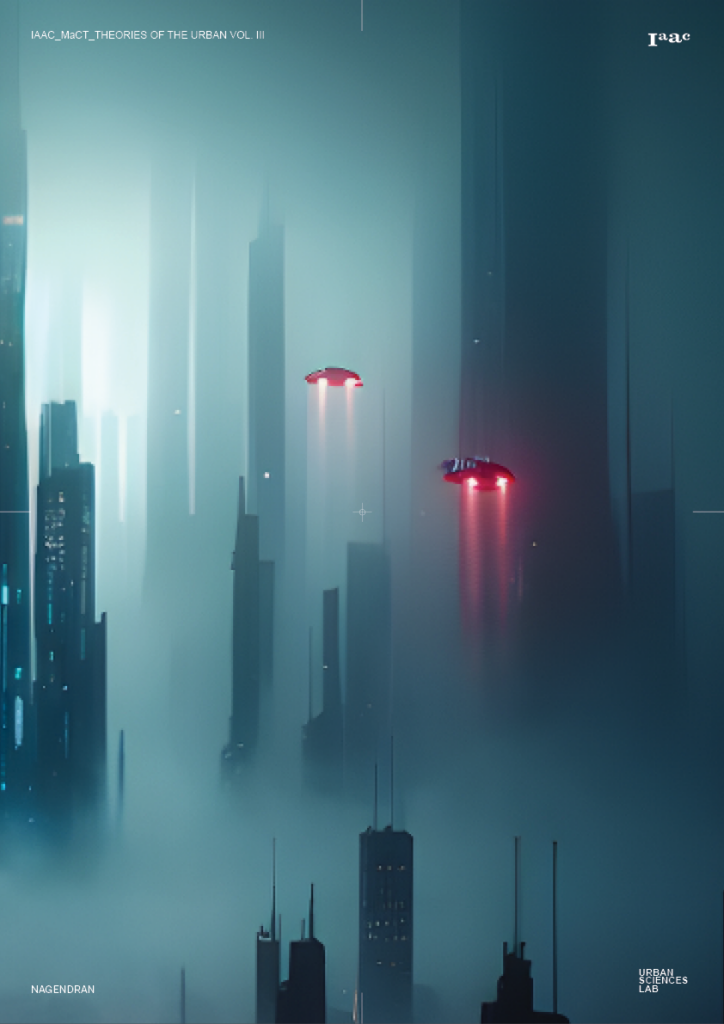Sterling, B (2015) imagined four fictitious scenarios of how future skyscrapers might be, differentially equalizing the state of technology and the economic-political climate:
Future skyscraper 1: Huge, lopsided pyramid
Future skyscraper 2: No-nonsense, mil-spec fortress
Future skyscraper 3: Colossal, awkward tower
Future skyscraper 4: Postindustrial, digitized monster
In our last scenario, the Smart City has conquered all it sees. Architecture slavishly follows the postindustrial logic of the dominant titans of the era: Samsung, Apple, Huawei, Amazon, Google, Facebook. National and urban legal structures have been undercut, bankrupted and disrupted by the great networks. The Dumb Cities of the past are proved archaic, just too slow — stumbling blocks routed around by the process flows. Humming cloud barns are the new factories, package distribution centers are the new megamalls. Fully-privatized digital “enterprise zones” flourish in the once-hallowed city halls, while new supertalls have become prestigious follies for elaborate digital empires.
Bizarre experiments flourish. Everyday objects are unnecessarily digitized, in much the way that pencil sharpeners used to be streamlined. Walls and floors are made of ultralight carbon-fiber, vibrating like drumheads. Elevators are fired up and down like big plastic bullets, and woe to the occupants’ over-pressured ears. Touchscreen building skins act as monster billboards, where the rival skyscrapers flame and screech at one another. Little courier robots, zipping along on their generic Googlemaps, are becoming more common than rats.
Some towers go rent-free to occupants, if they’re willing to abandon their privacy entirely to the prurient landlord. Augments haunt the halls and streets; it’s considered chic to remove all the visible, touchable controls, restricting access to the handheld devices of tenants. Doorways, and even the sidewalks, argue with the derelicts, Siri-style.
This bounty of features comes at a price: severe instability and cruelly rapid obsolescence. Real estate is a casino; whole cities go bust with the slick invisible ease of Facebook annihilating MySpace. The City of Oz is splendid, but the Wizard of Oz, for all his greatness and power, is one phosphor-dot thick.

Final Text :
In a postindustrial world, the Smart City reigns supreme, its architecture dictated by tech giants like Samsung, Apple, Huawei, Amazon, Google, and Facebook. Traditional legal structures and urban politics have crumbled, replaced by the dominance of massive networks. Cloud data centers now serve as factories, and package distribution hubs are the new megamalls. City halls have transformed into private digital enterprise zones, while towering skyscrapers showcase the power of digital empires.
These supertalls loom over the skyline, embodying a dystopian reality where tech and twisted politics shape the cityscape. Artificial animals, such as robotic owls and snakes, symbolize the loss of natural life, blurring the line between real and synthetic. Buildings are constructed from ultralight carbon-fiber, with vibrating walls and floors. Touchscreen facades act as enormous billboards, with rival skyscrapers displaying aggressive messages. Courier robots have replaced the rats, swarming the city streets.
The once-vibrant wilderness is now a distant memory, suffocated by the relentless expansion of the digital empire. Birds are replaced by flying cars, zipping through the air in intricate patterns, while cyborgs with mechanical limbs blend seamlessly among the populace. Trees have been replaced by sleek robotic counterparts, their artificial branches stretching skyward in a mockery of natural life. Augmented reality controls are hidden, limiting access to handheld devices, while doorways and sidewalks interact with people like Siri.
This tech-driven utopia comes at a devastating cost: severe instability, rapid obsolescence, and the total annihilation of our natural world. The grandeur of the City of Oz conceals its fragility, as thin as a single pixel, signaling the end of wilderness and authentic life.


